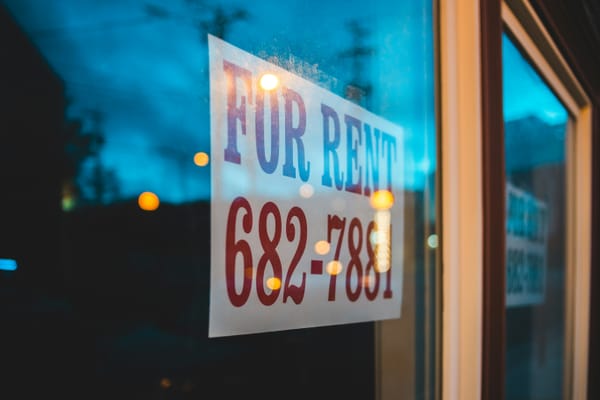Could Climate Change Collapse the Florida Housing Market?

5 minutes of real estate insight that actually makes you richer.
This is our daily note to serious investors—real operators who want clear signals, no fluff, and a tighter pulse on what’s really moving in real estate right now.
If that’s you, welcome. Let’s get into it.
Min 1: Climate Panic? We’re Still Buying.
This morning’s headline from The Times made the rounds fast. Apparently, a housing collapse is underway—this time caused not by bad loans or rate hikes, but climate change.
The story zeroes in on Florida, where insurance premiums are spiking and making it harder to finance or sell properties in coastal zones. David Burt, the guy who flagged the 2008 meltdown, says this could be another systemic crisis. Homes are becoming uninsurable. Prices could fall. Investors should be worried.
It’s dramatic, sure. And like most dramatic stories, it’s half right. Insurance costs are up. That part’s real. But the rest? It’s missing context—and more importantly, missing the play.
Min 2: The Real Problem Was Never the Weather
Here’s what the media doesn’t explain: rising premiums aren’t tanking the market. They’re exposing the people who weren’t doing the math in the first place.
You know the type. The investors who banked on perfect conditions. Premiums stay low. Rent growth keeps going. Cap rates compress forever. That worked until it didn’t. Now, the ones who cut it close are underwater and surprised about it.
But this isn’t a “market collapse.” It’s a filter. The headlines make it sound like all of real estate is about to slide into the ocean, but what’s really happening is this—deals with no room for error are breaking. The ones built with margin? Those are still standing just fine.
Min 3: JD’s Buying Where the Market Forgot to Look
If you watched JD Allen’s latest video, you already know the playbook isn’t about avoiding real estate. It’s about moving where the fundamentals are still sane.
He calls it the exurb shift—and it’s the biggest opportunity we’ve seen in years.
These are the areas outside the city lines where people are quietly relocating. Not because they’re fleeing disaster, but because they want space, affordability, and a little breathing room. The growth isn’t loud, but it’s steady. And the demand for housing in these pockets is climbing.
JD’s been clear about it. These markets still cash flow. The entry points make sense. The buildings aren’t drowning in insurance costs. And most of the time, nobody’s fighting you over the deal.
Min 4: If Insurance Breaks the Deal, It Wasn’t a Deal
Let’s be honest. The investors who are getting crushed right now didn’t get unlucky. They got sloppy.
If a 20% jump in premiums takes your deal from profitable to panic, then you never had a real deal to begin with. That’s not climate risk. That’s bad underwriting.
We’ve been screening insurance the same way we screen roofs and plumbing. What year was it built? How’s the drainage? What’s the local carrier environment like? These aren’t curveballs—they’re checkboxes.
So when premiums shift, we don’t panic. We adjust. Or we walk. But we never overpay and hope the weather holds.
Min 5: We’re Watching Who Blinks First
Every time the media drops a fear story like this, somebody overreacts. A few sellers get nervous. A few brokers whisper “motivation.” And that’s where the real opportunities show up.
We’re not rooting for panic. But we are watching for it. Because fear moves fast, and capital that’s calm tends to win.
No one’s saying this is 2021 again. That’s not the goal. The goal is to buy well in a market that still works if interest rates don’t budge and insurance costs keep climbing.
We’re not getting out of the game. We’re just tightening the playbook. And from where we’re sitting, that’s a good place to be.
See you tomorrow.
— The 5
P.S. If you want to go deeper into JD’s full framework for finding, underwriting, and scaling multifamily deals in this exact market, watch the replay of his recent workshop here:
👉 https://thebouncemethod.com/workshop-replay
He breaks it all down—from exurb targeting to the financial model behind the Bounce Method itself. Well worth a look if you’re building serious momentum this year.



